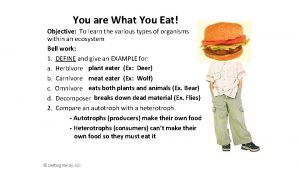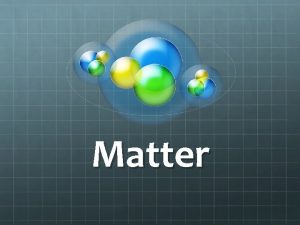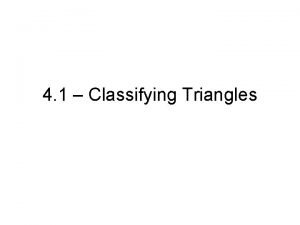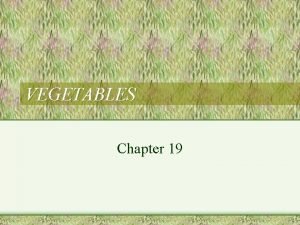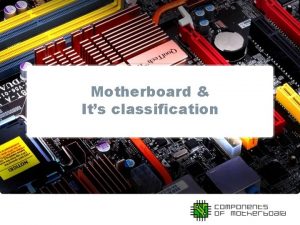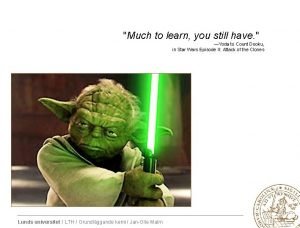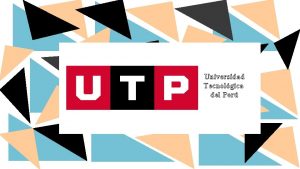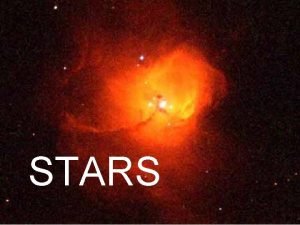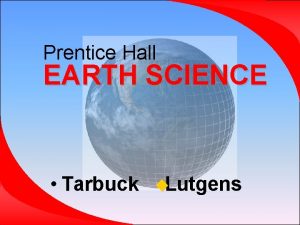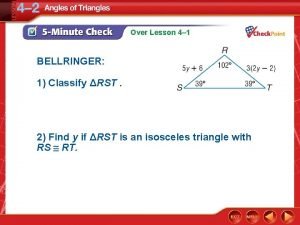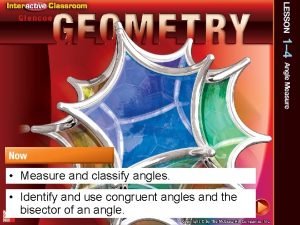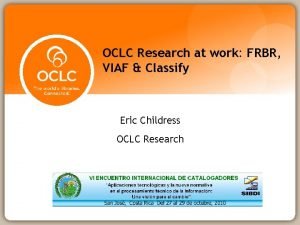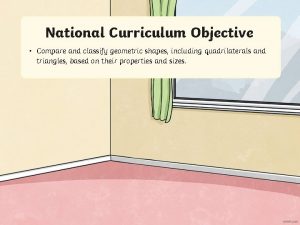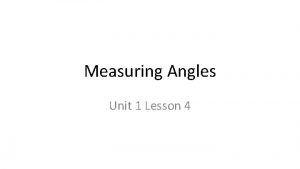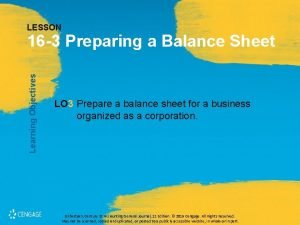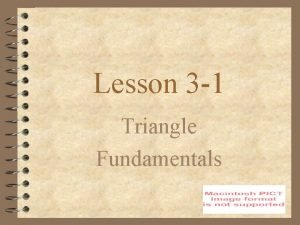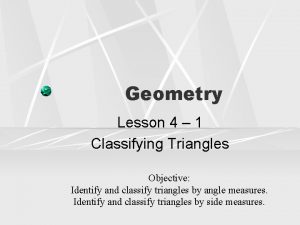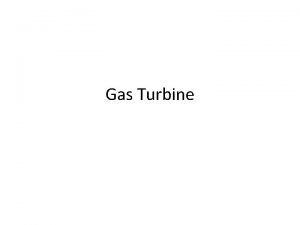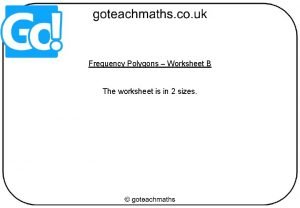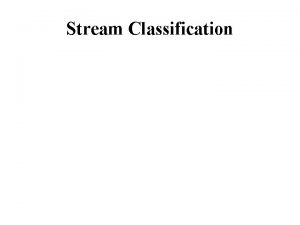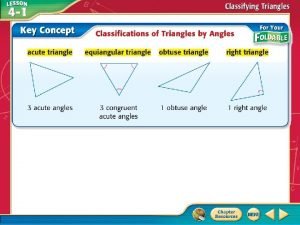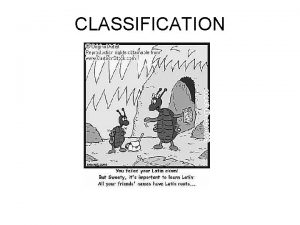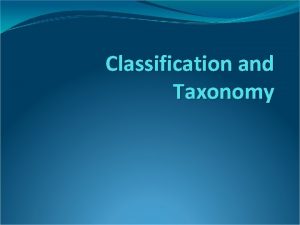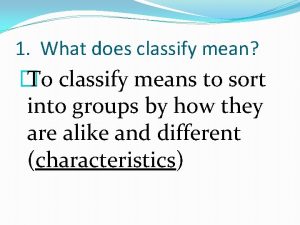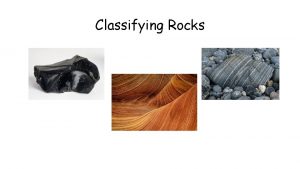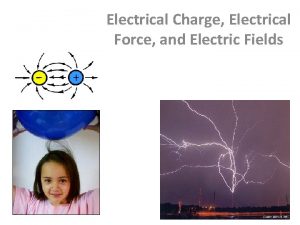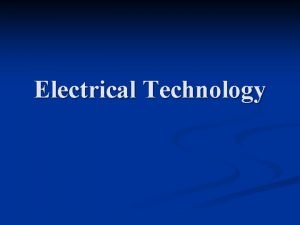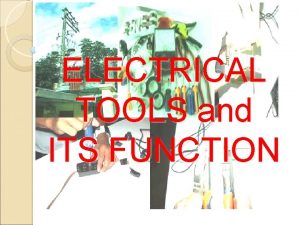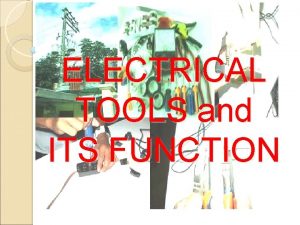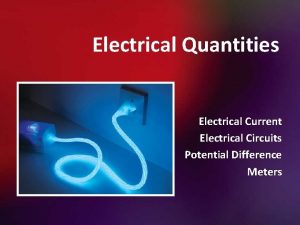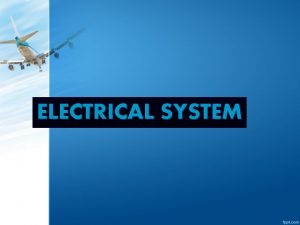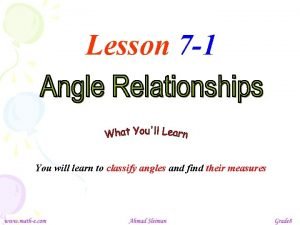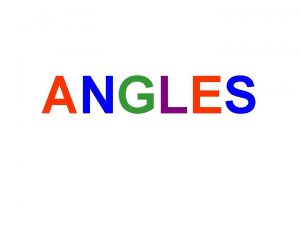What you will learn You will classify electrical















































- Slides: 47


What you will learn: • You will classify electrical charge and analyze how charge interacts with matter • You will infer the rules of how charge pushes and pulls on the world

Why it’s important: • In this age of microprocessors and sensitive circuitry, a knowledge of static electrical charge may save your electronic components from damage

Chapter 32: Electrostatics Historical Background Early Experimenters The Greeks (600 B. C. ) Thales of Miletus puzzled about the static charge that he got when rubbed amber with wool

The Chinese (376 B. C. ) discovered that piece of Magnetite, when suspended by thread, would align itself with direction of Earth’s North and South. Early form of compass for navigation

The Europeans- William Gilbert in 1660 described the electrification of many substances and coined the term “electricity” from Greek word for amber.

Benjamin Franklin (1752) Credited with being the first to discover that lightning and thunder are the result of electrical charges

Early Electric Power (1800 s-) Electromagnetic Induction and Batteries Michael Faraday (1831) showed that moving magnet through a coil of wire caused an electric current to flow in wire

Samuel Morse’s Telegraph (1837) first practical use for electricity

Gramme (1871) produced the first electrical generator

Thomas Edison and Electric light (1879)

Nikola Tesla (1883) discovered alternating current (AC)

20 th Century- Electricity “sparked” a new technological revolution

I. Electrical Forces and Charges (32. 1) A. Electrostatics- electricity at rest (Involves electric charges, forces between them, and their behavior in materials)

B. Electrical forces 1. arise from particles in atoms 2. Occur as pair of forces acting on you at all times a. Attracting and repelling forces b. This force attributed to property called charge

1). Electrons- negative charge 2). Protons- positive charge 3). Neutrons- neutral charge

3. Much stronger than gravitational force

C. Atoms 1. Every atom has positively charged nucleus surrounded by negatively charged electrons 2. All electrons are identical (same mass and quantity of negative charge)

3. Nucleus composed of protons and neutrons. a. all protons are identical b. all neutrons identical c. Proton has mass 2000 times greater than electron d. positive charge of proton equal in magnitude to negative charge of electron. e. neutron has mass slightly greater than proton and has no charge

4. Atoms usually have as many electrons as protons, so atom has a zero net charge 5. Fundamental rule at the base of all electrical phenomena is: Like charges repel; opposite charges attract

II. Conservation of Charge (32. 2) A. Electrons and protons have electric charge 1. Neutral atom- electrons equal protons (no net charge) 2. If electron removed atom no longer neutral- would have one extra proton and be positively charged

3. Ion- a charged atom a. positive ion- has net positive charge (it has lost one or more electrons) b. negative ion- has net negative charge (it has gained one or more extra electrons)

B. Electrical charge 1. Matter made of atoms 2. imbalance in numbers cause object to be electrically charged

C. Electrons 1. Inner electrons bound tightly to oppositely charged nucleus 2. Outermost electrons- loosely bound and can be easily dislodged. 3. Different materials require varying amounts of energy to tear an electron away from an atom 4. An object with unequal numbers of electrons and protons is electrically charged (either negatively or positively)

D. Conservation of charge 1. Electrons are neither created nor destroyed a. They are simply transferred from one material to another 2. Charge is conserved (cornerstone of physics along with conservation of energy and momentum)

III. Coulomb’s Law (32. 3) A. Explains the electrical force between any two objects 1. Similar to Newton’s Law of Gravitation 2. Obeys inverse-square relationship with distance 3. Discovered by French physicist Charles Coulomb (1736 -1806)

B. Coulomb’s Law- states that for charged particles or objects that are small compared to the distances between them, the force between the charges varies directly as the product of the charges and inversely as the square of the distance between them d = distance between charged particles q 1 = quantity of charge of one particle q 2 = quantity of charge of other particle k = proportionality constant


1. SI unit of charge is the coulomb (C) a. One coulomb = charge of 6. 24 billion electrons (6. 24 X 1018 electrons) b. Amount of charge that passes through common 1 -W light bulb in about one second

2. Proportionality constant (k) in Coulomb’s law is similar to G in Newton’s law of gravitation. a. Unlike (G) in gravitation equation, (k) is a very large number

b. Biggest difference between gravitation and electrical forces is that while gravity only attracts, electrical forces may either attract or repel.

C. Electrical forces usually balance out. 1. Weak gravitational force (attractive only) is predominant force between astronomical bodies 2. Atomic level- explains the bonding of atoms to form molecules

IV. Conductors and Insulators (32. 4) A. Conductor-materials that have more loosely bound outer electrons that can roam in the material 1. Metals are good conductors of electricity 2. Also good conductors of heat Metals Non Metals

B. Insulator- Materials whose electrons are not free to wander 1. Also poor conductors of heat 2. Rubber and glass good insulators

C. Semiconductors- materials that can be made to behave as either conductor or insulator (thin layers of semi-conducting materials sandwiched together make up transistors)

D. Superconductors- materials that acquire infinite conductivity (At temperature near absolute zero, certain metals become superconductors)

V. Charging by Friction and Contact (32. 5) A. Charging by Friction- can transfer electrons when one material rubs against another

B. Charging by Contact- can transfer charge by touching charged object to neutral object

VI. Charging by Induction (32. 6) A. Electrons are caused to gather or disperse by the presence of a nearby charge (even without physical contact)

1. Charging by induction occurs during thunderstorms

2. Demonstrated by Benjamin Franklins kite experiment 3. Most lightning is an electrical discharge between oppositely charged parts of a cloud.

B. An object can be charged when touched when the charges are separated by induction.

C. Grounding- when we allow charges to move off (or onto) a conductor by touching it, it is common to say we are grounding it. 1. allow path to practically infinite reservoir for electric charge (the ground) 2. Important when we talk about electrical currents

3. Lightning rod- designed by Franklin to prevent large buildup of charge that would otherwise lead to a sudden discharge between cloud and building.

VII. Charge Polarization (32. 7) A. When charged rod brought near an insulator, there are no free electrons to migrate throughout the insulating material. Instead there is a rearrangement of the positions of charges within the atoms and molecules.

1. One side is induced to be slightly more positive or negative than the opposite side 2. The atom or molecule is said to be electrically polarized.

3. Many molecules are electrically polarized (water)
 Learn to learn
Learn to learn The more you study the more you learn
The more you study the more you learn You live and learn
You live and learn You are what you learn
You are what you learn How do you classify uniform and non-uniform mixtures?
How do you classify uniform and non-uniform mixtures? Grade 7 science unit 3 mixtures and solutions answers
Grade 7 science unit 3 mixtures and solutions answers Naming polynomials by degree and number of terms
Naming polynomials by degree and number of terms Miscellaneous tools in carpentry meaning
Miscellaneous tools in carpentry meaning Classify triangles
Classify triangles What are the properties used to classify stars
What are the properties used to classify stars Classifying vegetables
Classifying vegetables Classification of motherboard
Classification of motherboard Medelatommassa
Medelatommassa Extension work project
Extension work project Lesson from ant
Lesson from ant Obey teacher
Obey teacher Would you rather learn english or french passive voice
Would you rather learn english or french passive voice Tell me show me involve me
Tell me show me involve me What do you expect to learn
What do you expect to learn Today you will learn
Today you will learn Pakikipagkilala
Pakikipagkilala Universidad tecnolgica
Universidad tecnolgica Thank you images in electrical
Thank you images in electrical Materials and tools needed
Materials and tools needed Classify instruction set of 8086
Classify instruction set of 8086 Characteristics of quadrilateral
Characteristics of quadrilateral How do scientists classify stars?
How do scientists classify stars? Classifying rocks
Classifying rocks Types of clasps in rpd
Types of clasps in rpd Classify real numbers
Classify real numbers Is a trapezoid always quadrilateral
Is a trapezoid always quadrilateral Pure substance examples
Pure substance examples Classify sedimentary rocks
Classify sedimentary rocks Classify rst
Classify rst Lesson 1 classify angles answers
Lesson 1 classify angles answers Oclc classfy
Oclc classfy Compare and classify geometric shapes
Compare and classify geometric shapes Lesson 4 measuring angles
Lesson 4 measuring angles How does threegreen classify its assets?
How does threegreen classify its assets? Lesson 4 classify angles
Lesson 4 classify angles Lesson 3 classify triangles
Lesson 3 classify triangles Arthrology meaning
Arthrology meaning Classify computer networks based on transmission technology
Classify computer networks based on transmission technology Classify instruction set of 8086
Classify instruction set of 8086 Classify the following triangle as acute obtuse or right
Classify the following triangle as acute obtuse or right Classify gas turbine
Classify gas turbine Classify polygons worksheet
Classify polygons worksheet Classifying polygons worksheet
Classifying polygons worksheet



